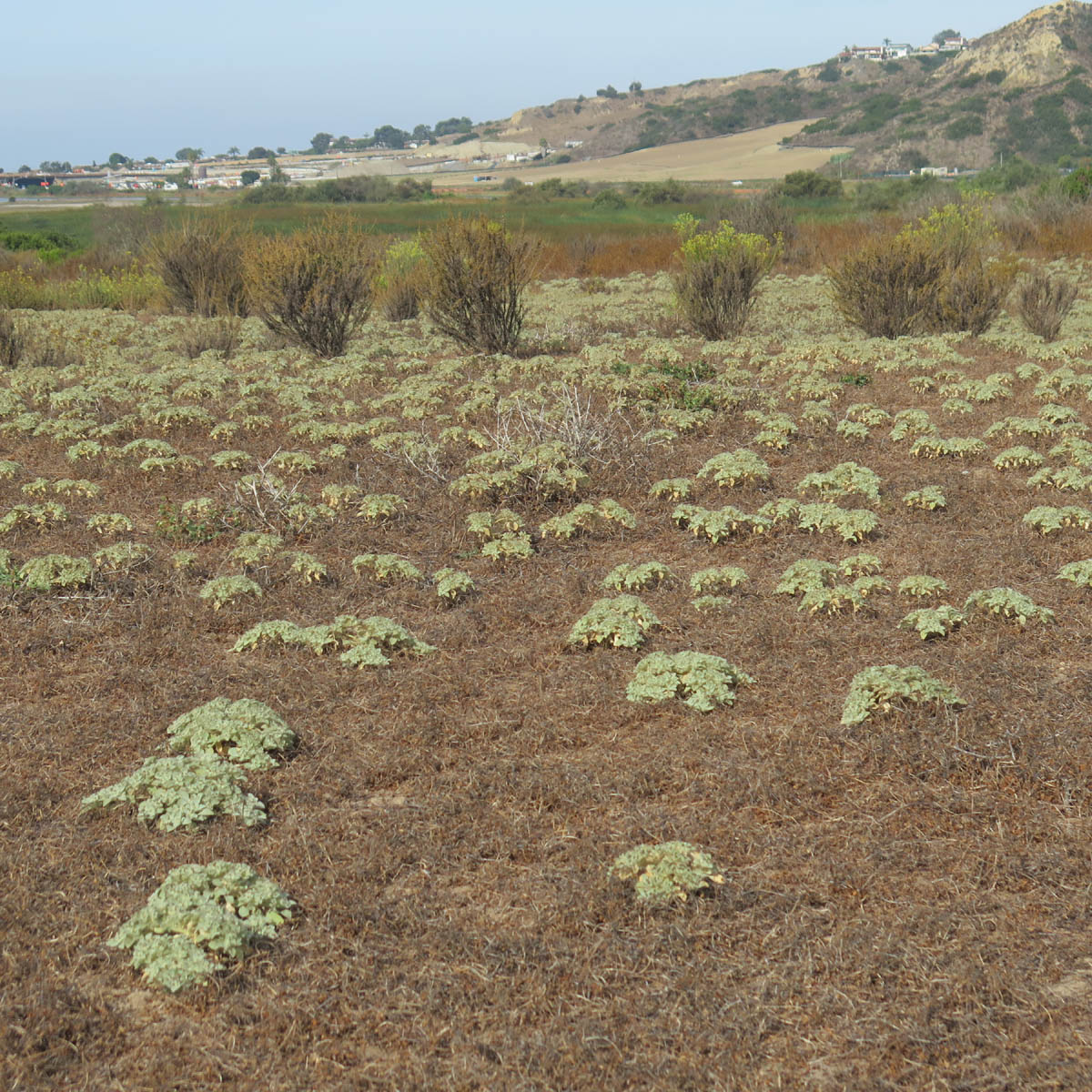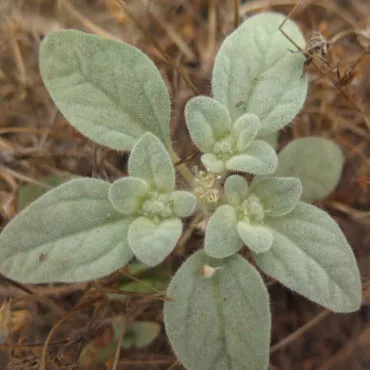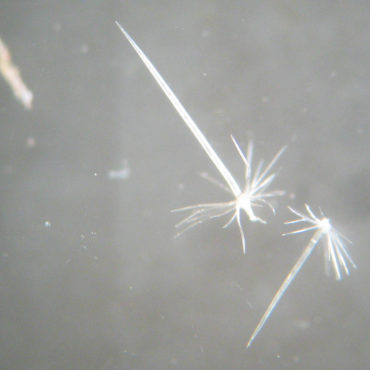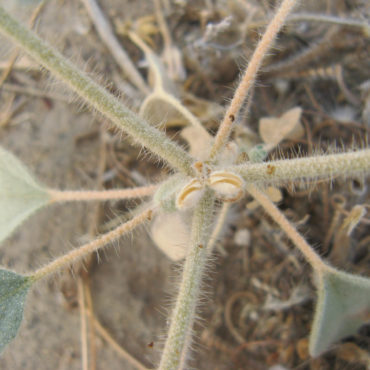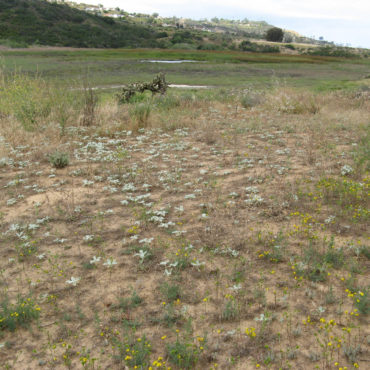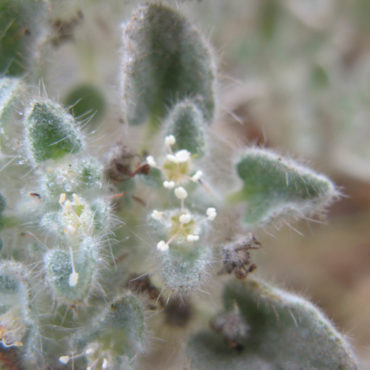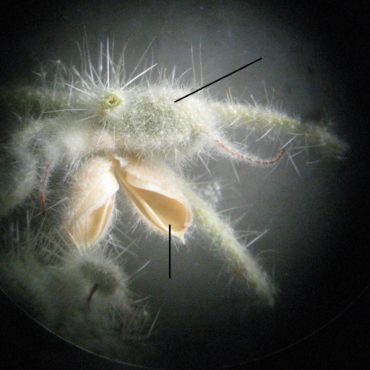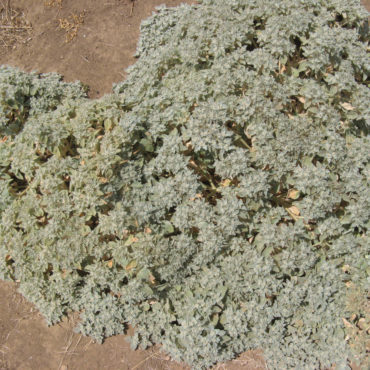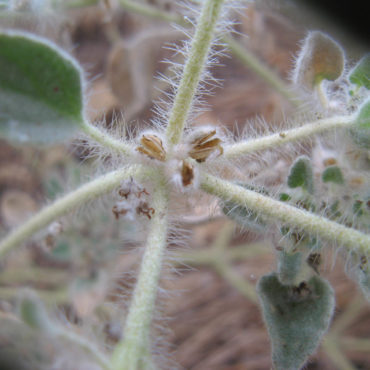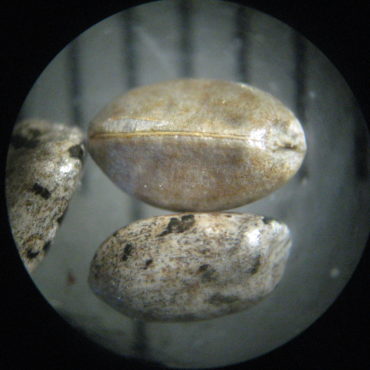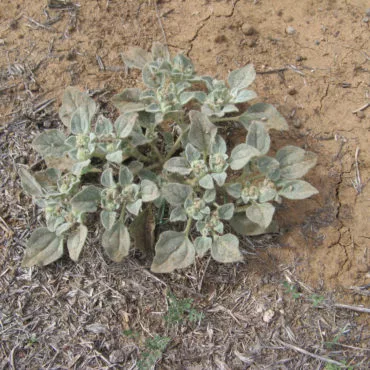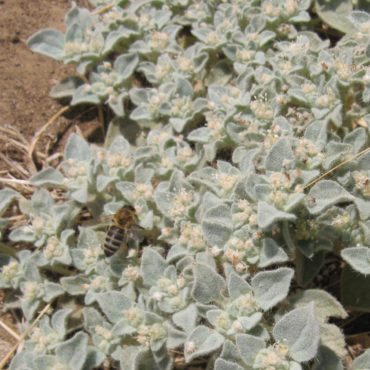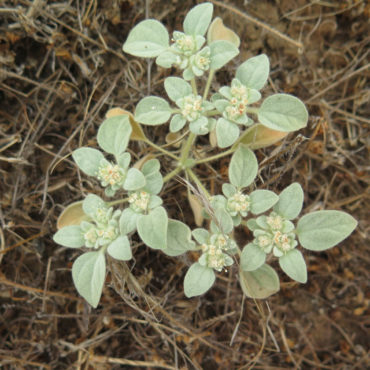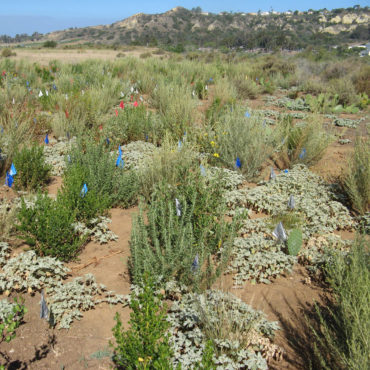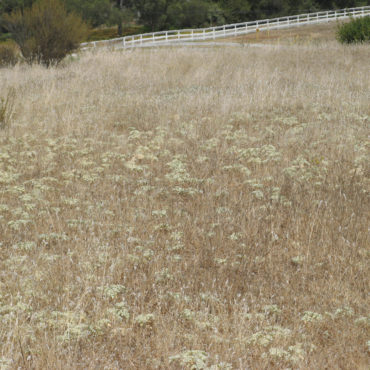Doveweed is a small, neat greenish-gray plant that forms small mats or mounds; ours are usually less than a few inches high and two feet wide. The plant has a deep taproot, and it is regularly branched outward from a basal point. The leaves are rounded triangular to oval, with three prominent veins; they are reported to three inches (8 cm) long. All parts of the plant are covered with dense pale hairs. Most hairs are star shaped with many arms of similar length, others are similar but with a long, bristly hair emerging from the center. Minute glandular hairs beneath star shaped hairs give the plant a distinctive, not unpleasant odor. The hairs can irritate the skin.
Plants in the Reserve tend to occur in large, distinctive patches with individual clumps of one or a few plants well separated from one another.
Male and female structures occur on separate flowers on the same plant (they are monoecious). Both sexes are inconspicuous. Male flowers are 1/8 to 1/4 (0.4 cm) across, in small groups at the ends of branches. They lack petals. The calyx is green and cup-shaped, usually with five lobes. There are 6-10 stamens exserted beyond the calyx with cream colored anthers and pollen. The female flowers occur in groups of one to a few in the axils beneath the male flowers. Female flowers lack both sepals and petals. There is one pistil with a plump, oblong, one-chambered ovary and one usually thread-like style, often curved or coiled. The main flowering period is May – October.7
The fruit is a dried capsule that splits into two valves from the tip. The outer wall of the capsule consists of two structures and appears two-layered. There is usually a single seed, about 1/8 inch (3-4 mm) long; it is a smooth ellipsoid, somewhat triangular in cross section and variously mottled or striped in tans, browns or grays, or occasionally solid.

